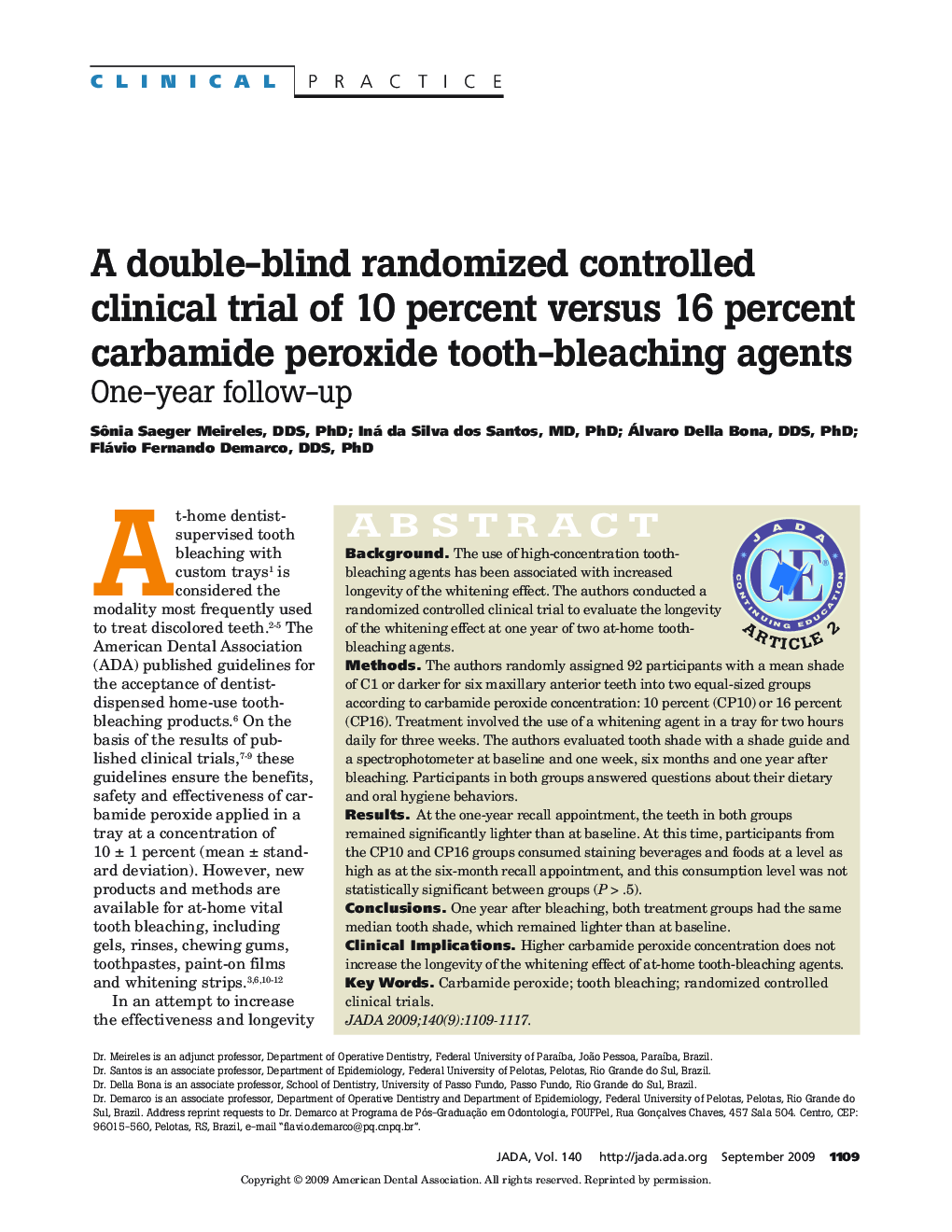| Article ID | Journal | Published Year | Pages | File Type |
|---|---|---|---|---|
| 3139144 | The Journal of the American Dental Association | 2009 | 9 Pages |
ABSTRACT BackgroundThe use of high-concentration tooth-bleaching agents has been associated with increased longevity of the whitening effect. The authors conducted a randomized controlled clinical trial to evaluate the longevity of the whitening effect at one year of two at-home tooth-bleaching agents.MethodsThe authors randomly assigned 92 participants with a mean shade of C1 or darker for six maxillary anterior teeth into two equal-sized groups according to carbamide peroxide concentration: 10 percent (CP10) or 16 percent (CP16). Treatment involved the use of a whitening agent in a tray for two hours daily for three weeks. The authors evaluated tooth shade with a shade guide and a spectrophotometer at baseline and one week, six months and one year after bleaching. Participants in both groups answered questions about their dietary and oral hygiene behaviors.ResultsAt the one-year recall appointment, the teeth in both groups remained significantly lighter than at baseline. At this time, participants from the CP10 and CP16 groups consumed staining beverages and foods at a level as high as at the six-month recall appointment, and this consumption level was not statistically significant between groups (P > .5).ConclusionsOne year after bleaching, both treatment groups had the same median tooth shade, which remained lighter than at baseline.Clinical ImplicationsHigher carbamide peroxide concentration does not increase the longevity of the whitening effect of at-home tooth-bleaching agents.
